#VR for Industrial Skill Development
Explore tagged Tumblr posts
Text
As industries evolve, the need for effective training solutions becomes increasingly critical. Traditional training methods often fall short, especially in high-risk environments where practical experience is essential. Enter Simulanis, a pioneering company specializing in Virtual Reality (VR) solutions for industrial training. With its innovative approach, Simulanis is redefining how organizations train their employees, ensuring that they are well-equipped to handle the challenges of their respective fields.
#Simulanis VR Industrial Training#Virtual Reality Industrial Training#Simulanis VR Solutions#Immersive Industrial Training#VR for Industrial Skill Development#Virtual Reality Safety Training#Simulanis VR Training Programs#Industrial Training Simulations#VR for Equipment Training#Simulanis VR Training Modules#Virtual Reality Training for Workers#Simulanis Immersive Training Solutions#VR for Manufacturing Training#Simulanis Industrial Training Platform#Virtual Reality Training for Heavy Machinery#VR-Based Safety Simulations#Virtual Reality Skill Development#Simulanis VR for Employee Training#Virtual Reality for Industrial Operations#Innovative VR Training for Industry
0 notes
Note
What’s your short auto bio?
How did you learn the game making stuff? How do you have time/money? How did you find your style?
oh yeag sure i can give u a lil summary
i wanted to be a game developer my entire life after getting an n64 with zelda and mario when i was like 7 years old
that lead to me taking an experimental 3d course in high school that used blender cuz they had no budget and just used a free program (lucky me that blender eventually turned into the juggernaut that it is now). They didn't have any game design classes but i sated my curiosity by playing games with heavy customization like halo forge and little big planet
in college i took a game design class that introduced me to the Unreal Development Kit (what came before Unreal 4) and, while the classes didn't really teach me much just having access to the engine is what really sparked my drive to start a career in the games industry
few years later I got into the industry during the 'vr is the future lets open up 104599034 game dev studios this bubble totally wont burst' craze of the early - mid 2010's and quickly climbed the ladder due to my skills. on my free time i finished my first self-published game Arcus and released it.
but of course the bubble burst and i got laid off (this coincidentally(?) happened at the same time i came out as trans. lol.) After that I stuck to working indie as, surprise surprise, crunch was a thing at my big industry job. I worked at a few studios for a couple of years, during which bloodborne psx (my second self published indie game) was developed and released on my free time.
all my indie jobs ended with being let go due to the reality of indie development having worse job security. i decided to stop doing "professional" work altogether and became the self publishing indie solo dev that you see today 💙
356 notes
·
View notes
Text
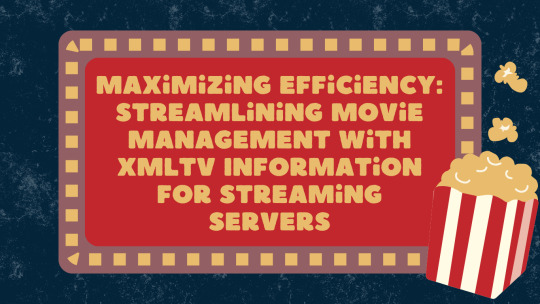
Effective XMLTV EPG Solutions for VR & CGI Use
Effective XMLTV EPG Guide Solutions and Techniques for VR and CGI Adoption. In today’s fast-paced digital landscape, effective xml data epg guide solutions are essential for enhancing user experiences in virtual reality (VR) and computer-generated imagery (CGI).
Understanding how to implement these solutions not only improves content delivery but also boosts viewer engagement.
This post will explore practical techniques and strategies to optimize XMLTV EPG guides, making them more compatible with VR and CGI technologies.
Proven XMLTV EPG Strategies for VR and CGI Success
Several other organizations have successfully integrated VR CGI into their training and operational processes.
For example, Vodafone has recreated their UK Pavilion in VR to enhance employee training on presentation skills, complete with AI-powered feedback and progress tracking.
Similarly, Johnson & Johnson has developed VR simulations for training surgeons on complex medical procedures, significantly improving learning outcomes compared to traditional methods. These instances highlight the scalability and effectiveness of VR CGI in creating detailed, interactive training environments across different industries.
Challenges and Solutions in Adopting VR CGI Technology
Adopting Virtual Reality (VR) and Computer-Generated Imagery (CGI) technologies presents a set of unique challenges that can impede their integration into XMLTV technology blogs.
One of the primary barriers is the significant upfront cost associated with 3D content creation. Capturing real-world objects and converting them into detailed 3D models requires substantial investment, which can be prohibitive for many content creators.
Additionally, the complexity of developing VR and AR software involves specialized skills and resources, further escalating the costs and complicating the deployment process.
Hardware Dependencies and User Experience Issues
Most AR/VR experiences hinge heavily on the capabilities of the hardware used. Current devices often have a limited field of view, typically around 90 degrees, which can detract from the immersive experience that is central to VR's appeal.
Moreover, these devices, including the most popular VR headsets, are frequently tethered, restricting user movement and impacting the natural flow of interaction.
Usability issues such as bulky, uncomfortable headsets and the high-power consumption of AR/VR devices add layers of complexity to user adoption.
For many first-time users, the initial experience can be daunting, with motion sickness and headaches being common complaints. These factors collectively pose significant hurdles to the widespread acceptance and enjoyment of VR and AR technologies.

Solutions and Forward-Looking Strategies
Despite these hurdles, there are effective solutions and techniques for overcoming many of the barriers to VR and CGI adoption.
Companies such as VPL Research is one of the first pioneer in the creation of developed and sold virtual reality products.
For example, improving the design and aesthetics of VR technology may boost their attractiveness and comfort, increasing user engagement.
Furthermore, technological developments are likely to cut costs over time, making VR and AR more accessible.
Strategic relationships with tech titans like Apple, Google, Facebook, and Microsoft, which are always inventing in AR, can help to improve xmltv guide epg for iptv blog experiences.
Virtual Reality (VR) and Computer-Generated Imagery (CGI) hold incredible potential for various industries, but many face challenges in adopting these technologies.
Understanding the effective solutions and techniques for overcoming barriers to VR and CGI adoption is crucial for companies looking to innovate.
Practical Tips for Content Creators
To optimize the integration of VR and CGI technologies in xmltv epg blogs, content creators should consider the following practical tips:
Performance Analysis
Profiling Tools: Utilize tools like Unity Editor's Profiler and Oculus' Performance Head Hub Display to monitor VR application performance. These tools help in identifying and addressing performance bottlenecks.
Custom FPS Scripts: Implement custom scripts to track frames per second in real-time, allowing for immediate adjustments and optimization.
Optimization Techniques
3D Model Optimization: Reduce the triangle count and use similar materials across models to decrease rendering time.
Lighting and Shadows: Convert real-time lights to baked or mixed and utilize Reflection and Light Probes to enhance visual quality without compromising performance.
Camera Settings: Optimize camera settings by adjusting the far plane distance and enabling features like Frustum and Occlusion Culling.
Building and Testing
Platform-Specific Builds: Ensure that the VR application is built and tested on intended platforms, such as desktop or Android, to guarantee optimal performance across different devices.
Iterative Testing: Regularly test new builds to identify any issues early in the development process, allowing for smoother final deployments.
By adhering to these guidelines, creators can enhance the immersive experience of their XMLTV blogs, making them more engaging and effective in delivering content.
Want to learn more? You can hop over to this website to have a clear insights into how to elevate your multimedia projects and provide seamless access to EPG channels.
youtube
7 notes
·
View notes
Text
Introduction to SkillonIT Learning Hub- Empowering Rural Talent With World-Class IT Skills
SkillonIT provides IN-Demand IT courses, connecting Rural talent with rewarding IT skills through affordable, accessible and career-focused education. with Guaranteed pathways to internship and high paying jobs, start with us and step into Opportunities at top Tech-leading Companies. Skillonit Learning Hub, located in Buldhana, Maharashtra, is a leading institute dedicated to equipping individuals with cutting-edge technology skills. With a mission to bridge the digital divide, the institute provides high-quality education in various IT and professional development domains. Skillonit focuses on practical, industry-oriented training, ensuring students gain the expertise needed to thrive in today’s competitive job market. The hub is committed to empowering rural talent and shaping the next generation of skilled professionals.

Courses Offered Skillonit Learning Hub offers a diverse range of courses tailored to industry demands, enabling students to master both technical and professional skills.
Blockchain Development — Smart Contracts (Solidity, Rust, Web3.js, Hardhat) — Blockchain Protocols (Ethereum, Solana, Binance Smart Chain, Fantom) — Decentralized Applications (DApps) Development
Front-End Development — HTML, CSS, JavaScript — Frameworks: React.js, Vue.js, Angular — Responsive Web Design & UI Frameworks (Bootstrap, Tailwind CSS)
Back-End Development — Server-side Programming (Node.js, Python, PHP, Java, .NET) — Database Management (MySQL, MongoDB, Firebase, PostgreSQL) — API Development (RESTful APIs, GraphQL, WebSockets)
Full-Stack Development — Front-End + Back-End Integration — MERN Stack Development — Database, Deployment & DevOps Practice
Mobile App Development — Cross-Platform Development (Flutter, React Native)
Unity 3D Game Development — Game Mechanics & Physics — C# Programming for Game Development — Virtual Reality (VR) & Augmented Reality (AR) Integration
Professional UI/UX Design — User Interface Design (Adobe XD, Figma, Sketch) — User Experience Principles — Prototyping, Wireframing & Usability Testing
Professional Graphic Design — Adobe Photoshop, Illustrator, and CorelDraw — Branding & Logo Design — Digital Art & Visual Communication
Digital Marketing — SEO, SEM, and Social Media Marketing — Content Marketing & Copywriting — Google Ads, Facebook Ads & Analytics
Spoken English — Communication Skills & Public Speaking — Accent Training & Fluency Improvement
Personality Development — Business & Corporate Etiquette — Confidence Building & Interview Preparation — Leadership & Teamwork Skills
Location & Contact : Address : Chhatrapati Tower, Above Maratha Mahila Urban, 3rd Floor, Chikhali Road, Buldhana, Maharashtra, 443001.
Contact us
Conclusion : Skillonit Learning Hub is revolutionizing IT and professional education by making technology and essential career skills accessible to aspiring developers, designers, marketers, and professionals. With a strong emphasis on practical learning, industry exposure, and career opportunities, it stands as a beacon of growth for young talent in Buldhana and beyond. Whether you are looking to build a career in tech, marketing, design, or personal development, Skillonit provides the ideal platform to achieve your goals. Join Our Social Community
Skillonit #Education #ITCourses #Buldhana #Maharashtra #IT #Blockchain #Fullstack #Front-end #Back-end #MobileApp #Unity3d #UIUX #Graphicdesign #Digitalmarketing #SpokenEnglish #Personality #development
2 notes
·
View notes
Text
youtube
We are happy to introduce a VR gaming learning platform that was developed by the SVAIY ART team for VROnderwijs. Students will be able to improve their skills in areas such as math, language, and calculation 🖤 ⚡
Read more: https://www.vronderwijs.nl/producten/
We started creating the game from scratch, namely by writing the Game Design Document, and only after that, we initiated the development process, making level design, mechanics, and other things. It is implemented on the Unreal Engine 5.
Each module suggests unique interactive experiences to make learning more fun. For example, if you want to escape from an alien spaceship, solve a math problem. So, students are in for an engaging learning experience that won't bore them.
Also, the game has a progress tracking system to see progress and work on mistakes more effectively.
Find more about us on our Website: https://svaiy.com/
We’re available for new projects! Drop us a line at e-mail: [email protected] or WhatsApp: https://wa.me/380958097334
© 2025 SVAIY ART INDUSTRIES LTD
#education#educational#vr#learning#languagelearning#gamedev#videogames#vrgames#vrgaming#unrealengine#ue5#unity#unity3d#metaquest2#metaquest3#applevisionpro#3d hashtag#svaiyart#Youtube
2 notes
·
View notes
Text
Rajasthan Launches AVGC-XR Policy 2024: A Step Toward Transforming the State’s Digital and Creative Industries

In a bold move to foster innovation and boost the state’s economy, the Rajasthan government recently launched the AVGC-XR Policy 2024. This policy aims to position Rajasthan as a leader in the rapidly growing sectors of Animation, Visual Effects, Gaming, and Comics (AVGC), as well as Extended Reality (XR). With the launch of this policy, Rajasthan is setting its sights on becoming a key hub for digital entertainment, immersive technology, and creative industries.
What is the AVGC-XR Policy 2024?
The AVGC-XR Policy 2024 is a strategic initiative by the Rajasthan government to promote the development of the AVGC and XR sectors in the state. It aims to create a sustainable and dynamic ecosystem that supports the growth of digital entertainment, gaming, animation, visual effects, and immersive technologies like virtual reality (VR) and augmented reality (AR). By leveraging the increasing demand for digital content and XR experiences, the policy seeks to establish Rajasthan as a global player in the creative and technology-driven industries.
This policy introduces several measures to support businesses, encourage talent development, and create a vibrant ecosystem for innovation and entrepreneurship. By fostering these industries, the Rajasthan government aims to boost employment, attract investments, and enhance the state’s global visibility in the digital world.
Key Features of the AVGC-XR Policy 2024
Financial Support and Incentives for AVGC and XR Companies The policy offers financial incentives for businesses operating in the AVGC and XR sectors. This includes subsidies, tax exemptions, and financial assistance to help businesses establish themselves and grow in the state. The policy also provides funding for startups involved in creating content, technology solutions, and other digital products in these sectors. These incentives will significantly reduce the initial investment burden on businesses, encouraging them to innovate and expand.
Skill Development and Talent Pool Creation One of the most crucial aspects of the AVGC-XR Policy 2024 is its focus on skill development. The policy recognizes the importance of a skilled workforce in driving the growth of the AVGC and XR industries. It proposes the establishment of training institutes and skill development programs specifically designed for animation, gaming, visual effects, XR technologies, and other digital content creation fields.
By investing in skill development, the government hopes to create a large pool of talent that can meet the growing demands of the industry. This will also ensure that Rajasthan becomes a talent hub for the national and international AVGC and XR sectors.
Infrastructure and Ecosystem Support The policy recognizes that the growth of the AVGC and XR industries requires robust infrastructure. To address this need, the Rajasthan government plans to develop dedicated clusters and innovation hubs for AVGC and XR businesses. These clusters will be equipped with the latest technology, high-speed internet, and collaborative workspaces that encourage innovation and creativity.
Additionally, the government will focus on creating a supportive ecosystem by collaborating with industry leaders, universities, and global players. This will help create an environment where companies can easily access resources, partnerships, and global markets.
Promotion of Rajasthan as a Global AVGC and XR Hub A significant goal of the AVGC-XR Policy 2024 is to make Rajasthan a global destination for the AVGC and XR industries. The policy outlines various strategies to promote the state’s capabilities in these sectors, including hosting international events, film festivals, and conferences. Rajasthan aims to attract global industry leaders, filmmakers, and content creators by offering them a conducive environment for collaboration, production, and innovation.
By leveraging the state’s rich cultural heritage and growing technological capabilities, Rajasthan plans to position itself as a leading center for digital content creation and immersive technologies.
How Will This Policy Benefit Rajasthan?
Job Creation and Economic Growth The AVGC-XR Policy 2024 is expected to generate significant employment opportunities in Rajasthan. By promoting industries such as animation, gaming, and visual effects, the state can create thousands of new jobs in creative fields, technology development, and digital content production. The policy will also encourage the growth of ancillary industries, such as software development, digital marketing, and content distribution, further boosting the state’s economy.
Attracting Investments and Global Partnerships With the implementation of this policy, Rajasthan is poised to attract both domestic and international investments in the AVGC and XR sectors. The incentives offered by the government will encourage investors and companies to establish operations in the state, which will bring in capital, expertise, and technological advancements. The policy’s focus on global partnerships will also help connect Rajasthan’s industries with the global market, creating new avenues for collaboration and growth.
Boosting Rajasthan’s Global Presence in the Digital and Creative Sectors The policy will put Rajasthan on the map as a hub for digital entertainment and immersive technology. Through various promotional strategies, including international events, film festivals, and business partnerships, the state will enhance its visibility in the global digital and creative industries. This increased global presence will attract global talent, increase tourism, and further promote Rajasthan’s cultural and technological strengths.
Fostering Innovation and Entrepreneurship The AVGC-XR Policy 2024 will encourage innovation and entrepreneurship in the state by providing financial support, infrastructure, and a collaborative ecosystem for startups. The government’s focus on creating innovation hubs will foster a culture of creativity and technology-driven entrepreneurship, enabling businesses to experiment, innovate, and grow.
The Future of Rajasthan’s AVGC and XR Industries
With the launch of the AVGC-XR Policy 2024, Rajasthan is set to become a major player in the digital entertainment and XR sectors. By investing in infrastructure, skill development, financial support, and global partnerships, the state is creating a conducive environment for businesses to flourish. The policy aligns with the growing global demand for digital content, animation, gaming, and immersive experiences, positioning Rajasthan as a key contributor to this dynamic sector.
As the world continues to embrace digital technologies and immersive experiences, the AVGC-XR Policy 2024 will provide Rajasthan’s businesses with the tools and resources needed to thrive in these fast-evolving industries. Whether you are an entrepreneur, investor, or creative professional, the policy offers numerous opportunities for growth, innovation, and success.
The AVGC-XR Policy 2024 is a significant milestone for Rajasthan in its journey to become a global leader in digital content creation and immersive technologies. With its comprehensive approach to infrastructure, talent development, financial support, and global promotion, the policy is set to revolutionize the AVGC and XR sectors in the state. For businesses and individuals in these industries, Rajasthan offers an exciting future full of opportunities to innovate, collaborate, and succeed in the global marketplace.
As the state continues to build on its strengths, the AVGC-XR Policy 2024 will undoubtedly help Rajasthan carve out a prominent place on the global digital map.
3 notes
·
View notes
Text
IT companies in Coimbatore :Hiring freshers role and benefit
Coimbatore has emerged as a preferred location for IT professionals due to its affordable cost of living, high-quality educational institutions, and the city’s well-developed infrastructure. Unlike metropolitan cities, IT companies in Coimbatore offers a balanced lifestyle with a lower cost of living, which appeals to many working professionals. With a pool of skilled talent graduating from nearby engineering and technical institutions, Coimbatore is an ideal place for IT companies to find qualified candidates for various roles, making it a hot spot for job seekers.
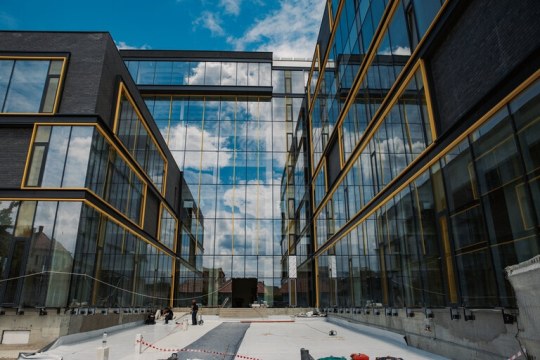
Who Are the Leading IT Companies in Coimbatore?
The city hosts several top IT companies, including Tata Consultancy Services (TCS), Cognizant, Wipro, and Robert Bosch, along with growing regional players like KGISL and Aspire Systems. These companies offer a variety of services from software development to business consulting and automation solutions. Working with such companies not only provides a chance to learn and grow but also adds credibility to one's career profile. Their well-established infrastructure and focus on training employees make them attractive employers in the region.
Best IT Companies in Coimbatore :
Coimbatore, one of Tamil Nadu's major industrial hubs, has seen significant growth in the IT sector. Known for its skilled workforce, affordable infrastructure, and a supportive business ecosystem, the city hosts many IT companies that offer a wide range of services from software development to digital transformation.
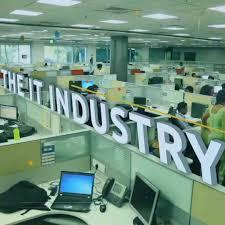
Here’s a look at some of the best IT company in Coimbatore :
Accenture :
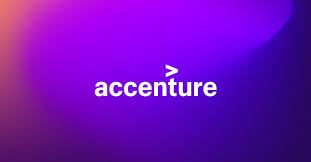
Global consulting and technology services company providing full-fledged IT and business process services.
ThoughtWorks:

Leaders in software consultancy to get custom software developed through agile methodology and digital transformation
Payoda Technologies :

focuses primarily on aspects of digital transformation, analytics, cloud solution development and software development.
Sridhar Vembu Institute of Technology (Zoho Corp) :

It is based in Chennai; however, the innovation and research wing of Zoho is based in Coimbatore, where it works on software product development.
Softratech Info :

The company provides IT solutions, consultancy, software development, and support services.
Repute Network :
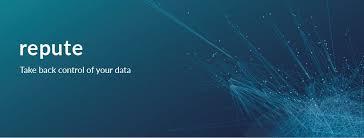
A technology-based company, focusing on digital payments, financial technologies, and blockchain solutions
Mindnotix Technologies :

A technology firm, developing web and mobile applications as well as AR/VR-based applications, and AI-driven applications.
Kumaraguru College of Technology :

Technology Business Incubator (KCT-TBI) - Incubates start-ups and tech innovation in IoT, AI, robotics, and software solutions.
Revature India :

Trains and develops software services and products, focusing on creating technical talent for the global market.
i2i Software Solutions :

Offers end-to-end software solutions and IT services, with a focus on custom development.
eQuadriga Software Pvt Ltd :

is an IT services company focusing on software development, mobile apps, and digital marketing.
Conclusion :
Coimbatore’s IT sector is full of opportunities for freshers, thanks to a supportive ecosystem of companies and a growing tech community. From MNCs like Cognizant and Bosch to dynamic startups, IT companies in Coimbatore provides ample options for fresh graduates eager to kickstart their careers. With a focus on learning, networking, and skill development, freshers can build a promising career in this thriving city.
#it company#IT companies in Coimbatore#internship#freshers it job#jobseekers#jobs#employment#careers#workplace#inside job
2 notes
·
View notes
Note
Hey, sorry if this is bad(?), but I was wondering if you had any advice for getting into the xr world/career. I think I've seen you mention the topic (encouraging others to join the field?) at least once, but I don't know how to even get started. Thank you for your time!
(If you could answer this not publicly I would appreciate it, but it's fine if you do, or like, if you don't answer at all)
not a bad thing to ask at all! I've actually been in the middle of writing a guide about this for some time that I will.... hopefully finish sometime soon ghskgh.
I hope you don't mind me posting this publicly - I ended up writing a short novel and figure it might be useful to others who are curious as well! anyways, the advice I give to people with a background in illustration is to start out with a Quest 2 headset. they retail at $300 new, but you can get them used via eBay, Craigslist, FB Marketplace or someplace like that for around $200 or under. the Quest 2 works without needing to be plugged into a PC, though you will probably want to buy a more ergonomic head-strap to make it more comfortable. (the head strap that Meta sells is overpriced, but this third-party one is really good) if you're interested in working with augmented reality (the type of work I do!) and have the ability to save up some extra money, I'd recommend waiting for the release of the Quest 3, which will launch this fall and cost $500. totally not a requirement at all to start learning, though.
other than that, I'd recommend starting out with free art programs like Open Brush and Gravity Sketch to familiarize yourself with creating in-headset. both of these programs have a large amount of tutorial videos up on YouTube - as well as an active community of other artists who are all generally very friendly and eager to help people learn. VR Art Live and The Spatial Canvas's Discord servers are the communities I'm part of. :)
after that, it all just comes down to posting your new artwork online to as many platforms as you can mentally handle (this is the hardest part for me, ghsghs), and also looking at paid XR artist programs/gigs. Mozilla Hubs, Horizon Worlds, and Figmin XR (that's me!) all have some creator opportunities where they pay people to create things on their platform.
you can also find work doing XR concept art, art performances, and I've even seen grant programs for XR artists from art galleries. these things are harder to find, but if you make a LinkedIn page and a modest portfolio of your XR art, chances are high that you'll get some eyes on it.
it's ridiculously easy to be a big fish in a small pond right now if you have any kind of skills with these programs. I will say that there does seem to be a push towards people who can create things that are interactive and can be shared with others (like AR Snapchat/TikTok/Instagram filters, experiences created and published to platforms like Mozilla Hubs, Figmin XR, etc.), so that's something to keep in mind while learning - but not something that should stop you!
going from 2D illustration to creating things in 3D space is a whirlwind of learning new skills that can often feel overwhelming, but the most important thing is that it should feel fun and enjoyable to you. I started out by just listening to music while painting in Tilt Brush (Tilt Brush was the original version of Open Brush, before Google made it open-source) and creating whatever felt the most fun in the moment. everything else just came from natural curiosity and connecting with other artists in the space.
lastly... I have no technical (coding, traditional 3D modeling) skills. I am a 2x college dropout with chronic mental illness, and prior to my current employment I was never able to hold a job for longer than 3 months. and yet....... this new industry has changed my life completely, and at 29 years old I finally feel like I have a purpose. I'm somehow a software developer now, without needing to know anything about software development. that's wild!!!
this is why I'm so excited for the future. if this brand-new technology (still in its infancy! viewed as frightening by so many!!) was able to help me in such a radical way... what will that mean for even more people discovering it as it becomes more accessible?
I don't know the answer to that yet... but I do know how wonderful it is to see people learning about all of this for the first time. helping with that alone is more than enough for me 💖
#auropost#also if any artist who sees this wants a free key to download figmin xr on the quest store i can give that to you#you can just dm me for it#i would give headsets away too if i could... but alas i don't have THAT many connections. yet.#i am just!! so enthusiastic about encouraging other people to make this type of art!!!#xr#vr#virtual reality#augmented reality#and lastly#apple just announced their headset#it's coming out next year but has like no interesting software yet#so there is about to be a huuuuugeee demand for people who know how to design spatial experiences/worlds/art/ANYTHING#things are changing so fast in the digital art world right now#but despite everything i think the demand for artists is only going to increase#people will quickly realize that ai cannot create anything new#and art made by humans will only become more valuable#more than anything i want people to use all this new technology to create what they personally love#because that's what will carry us forward
30 notes
·
View notes
Text
THE VIRTUAL REVOLUTION- by Alisha K
In the revolving landscape of technology, Virtual Reality (VR) presents itself as a promising asset for the exploration of new dimensions of experience. Surpassing the underrated definition of 'technology', it’s a groundbreaking advancement revolutionizing how we interact with our digital companions - computers. In this essay, I would be discussing how virtual reality engages users, its advantages in a wider perspective and its potential drawbacks. With the rapid advancement of technology, it is easy to predict the role that virtual reality would play in human-computer interaction in the future.
One of the primary attractions is its ability to amuse its users.VR provides a degree of engagement and involvement, by immersing users in 3D settings, completely unmatched by the traditional two-dimensional interfaces. VR improves intuitive control, allowing users to interact with digital environments in ways that feel natural and seamless. Through the use of immersive technology, users can physically immerse themselves in the virtual world and escape their surroundings. By facilitating a 360-degree experience, it creates the illusion that they have "stepped inside" the synthetic world. This immersion level is useful in applications like gaming and therapy, where the user’s emotional and psychological responses are key to the experience.
Originally developed for gaming, VR has since popularized enough to be adopted as an important tool for training and education in various industries, including healthcare, aviation, and education. Professionals can use it to imitate real-world situations and provide their workers with practical training. For example, medical training for complex surgical operations and pilotage training for emergencies, can be given in a risk-free environment. In the entertainment industry, theme parks are also adopting VR technology to enhance the experience of their visitors. Universal Studios' Harry Potter and the Forbidden Journey ride utilizes VR to take guests on a thrilling journey through Hogwarts.
VR has taken a toll over the younger generation. Sutherland, the original creator of the first VR simulation, failed to foresee his ‘headset’ becoming a permanent part of the coming generation’s ‘skulls’. Back in 1987 when Jaron Lanier named it virtual reality, he did not anticipate that his little foundation would cross virtual boundaries and become the ‘real’ reality- to most people anyway. Nowadays, virtual reality is becoming so popular that most introverted youths prefer their stimuli ‘friends’ over real humans, and social skills take a backseat. The age limit for users was set at 12 years or over, but neglected parenting resulted in its neglect too. Children from a young age use this technology and get “addicted” to it. VR is known to disrupt sleep, so it is advised to avoid playing 1-2 hours before bedtime. But the ones unable to control their compulsive desires, simply replace it with sleep to be on the safer side.
In conclusion, Virtual Reality has proved to be a game-changer in human-computer interactivity, making it a more enjoyable and immersive experience. While VR's potential across various industries is commendable, its drawbacks cannot be overlooked. Its usage must be controlled for the potential well-being of the user, to unlock the full potential of this technological novelty.
#poetry#aesthetic#bookish#writers and poets#writing#bibliophile#books#romantique#poets on tumblr#booklr#virtual reality#internet#online#spread awareness#self awareness#mental health awareness
3 notes
·
View notes
Text
How AR/VR Development Companies are Transforming Healthcare with Innovative Solutions
The healthcare industry is undergoing a significant transformation, driven by advances in technology that are improving patient care and medical practices. Among these advancements, augmented reality (AR) and virtual reality (VR) have emerged as powerful tools, revolutionizing how healthcare is delivered. Leading AR VR development company are at the forefront of this transformation, creating innovative solutions that address various challenges in diagnostics, treatment, and patient engagement.
These technologies are not merely enhancing existing processes but are also introducing entirely new ways to interact with medical data and provide care. By integrating AR and VR into healthcare, development companies are paving the way for more accurate diagnostics, safer treatments, and a more engaging patient experience.
1. Enhancing Diagnostics with AR/VR Solutions
Advanced Imaging and Visualization: AR/VR development companies are creating tools that allow medical professionals to overlay complex imaging data, such as MRIs and CT scans, onto real-world views. This advanced visualization helps doctors better understand the spatial relationships of internal structures, leading to more accurate diagnoses.
Interactive Diagnostic Training: VR platforms offer immersive training environments where medical students and professionals can practice diagnostic procedures and explore anatomical models in 3D. This hands-on approach enhances learning and skill development, preparing practitioners for real-world scenarios.
Real-Time Data Integration: AR applications provide real-time data overlays during diagnostic procedures, offering immediate access to relevant patient information and helping in making more informed decisions. This integration supports more precise and timely diagnostics.
2. Revolutionizing Treatment Procedures
Surgical Precision and Planning: AR/VR development companies are improving surgical outcomes by providing surgeons with augmented visualizations of the operating field. AR overlays critical information such as patient anatomy and procedural steps, which aids in performing complex surgeries with greater precision.
Pre-Surgical Simulations: VR technology enables surgeons to rehearse and plan complex procedures in a virtual environment before performing them. This simulation allows for meticulous planning, reducing the risk of complications and improving surgical efficiency.
Remote Surgical Assistance: AR/VR solutions facilitate remote assistance by enabling specialists to provide real-time guidance and support to surgeons in different locations. This collaboration enhances the quality of care and expands access to expert advice.
3. Enhancing Patient Engagement and Education
Immersive Patient Education: AR and VR applications are transforming patient education by offering interactive and immersive experiences. Patients can explore 3D models of their conditions and treatments, gaining a clearer understanding of their medical situations and options.
Interactive Rehabilitation Programs: AR/VR development companies are creating engaging rehabilitation programs that use virtual environments to motivate and guide patients through their recovery processes. These programs provide real-time feedback and make rehabilitation exercises more enjoyable and effective.
Emotional and Psychological Support: VR applications offer therapeutic environments to help patients manage anxiety, stress, and pain. Virtual reality can create calming experiences and provide emotional support, improving overall patient well-being.
4. Streamlining Administrative and Clinical Workflows
Enhanced Medical Training: AR/VR development companies are developing solutions that streamline medical training processes, reducing the need for physical models and cadavers. These digital tools make training more flexible and accessible, allowing for scalable and repeatable learning.
Improved Patient Monitoring: AR applications are aiding in real-time patient monitoring by overlaying data on patient dashboards and alerts. This feature helps healthcare providers track patient metrics more efficiently and respond promptly to any changes.
Efficient Data Management: AR/VR tools facilitate better data management by integrating medical records and visualizations into a unified interface. This integration improves data accessibility and reduces the time spent on administrative tasks.
Conclusion
AR/VR development companies are significantly transforming healthcare by introducing innovative solutions that enhance diagnostics, treatment, and patient engagement. From advanced imaging and surgical precision to immersive patient education and streamlined workflows, these technologies are reshaping how medical care is delivered and experienced. As AR and VR technologies continue to evolve, their potential to further revolutionize healthcare practices and improve patient outcomes remains vast, promising a future of more effective and personalized medical care.
2 notes
·
View notes
Text
From Static to Spectacular: How 3D Models Breathe Life into AR/VR/XR
In the rapidly evolving landscape of digital technology, augmented reality (AR), virtual reality (VR), and extended reality (XR) have emerged as transformative tools in various industries. From gaming and entertainment to education and healthcare, these immersive experiences are revolutionizing the way we interact with digital content. Central to this revolution are 3D models, which serve as the building blocks for creating rich, engaging, and interactive environments. In this blog, we'll explore how 3D models power AR/VR/XR experiences and the role that 3D asset stores like Znanye play in this dynamic ecosystem.
The Role of 3D Models in AR/VR/XR
Bringing Virtual Worlds to Life
At the heart of any AR, VR, or XR experience are 3D models—detailed, lifelike representations of objects, characters, and environments. These models are meticulously crafted to provide a sense of realism and immersion, which is crucial for creating convincing virtual worlds. Whether it’s a food 3D model in a virtual restaurant or space 3D models for an educational VR experience, the quality and detail of these models significantly impact user engagement and satisfaction.
Enhancing User Interaction
In AR/VR/XR environments, users interact with 3D models in ways that are not possible with traditional 2D interfaces. For example, a 3D model viewer allows users to rotate, zoom, and explore models from different angles, providing a more comprehensive understanding of the object. This interactive element is especially valuable in fields like education and training, where users can engage with complex concepts and scenarios in a hands-on manner.
Customization and Personalization
One of the key advantages of using 3D models in AR/VR/XR is the ability to customize and personalize experiences. Custom 3D models can be created to meet specific requirements, whether it’s designing a unique character 3D model for a game or developing plant 3D models for a landscaping application. This flexibility ensures that the virtual experiences are tailored to the needs and preferences of the users, enhancing their overall engagement and satisfaction.
The Importance of a Robust 3D Asset Store
Accessibility and Variety
A robust 3D asset store is essential for creators looking to develop compelling AR/VR/XR experiences. Platforms like Znanye offer a wide range of 3D objects for sale, from furniture 3D models and jewellery 3D models to more niche items like free 3D furniture models and 3D vehicle models. This variety ensures that creators have access to the specific assets they need to bring their visions to life.
Quality and Professionalism
Professional 3D models available on platforms like Znanye are crafted with attention to detail and high-quality standards, ensuring that they meet the demands of sophisticated AR/VR/XR applications. These models are often created by skilled artists and designers who understand the technical requirements of immersive experiences, resulting in assets that not only look great but also perform well in real-time applications.
Convenience and Efficiency
Online 3D modeling and asset stores streamline the process of acquiring 3D models. Instead of spending countless hours creating models from scratch, creators can simply download 3D models that meet their needs, allowing them to focus on other aspects of development. This efficiency is crucial in fast-paced industries where time and resources are often limited.
Selling Your 3D Models Online
For artists and designers, selling 3D assets online represents a lucrative opportunity. By listing their creations on a 3D model website like Znanye, they can reach a global audience of developers and creators looking for high-quality 3D models. Whether it’s a character 3D model, space 3D models, or any other type of asset, there is a growing market for diverse and innovative 3D models.
Benefits of Selling on a VR Models Store
Selling on a VR models store offers several advantages:
- Exposure: Access to a wide audience of potential buyers.
- Monetization: Earn revenue from your creations.
- Feedback: Receive valuable feedback from users to improve future models.
Conclusion
3D models are the cornerstone of AR/VR/XR experiences, providing the realism, interactivity, and customization that make these technologies so compelling. Platforms like Znanye play a crucial role in this ecosystem by offering a diverse and high-quality selection of 3D models, making it easier for creators to develop immersive and engaging experiences. Whether you’re looking to download 3D models for your next project or sell 3D assets online, Znanye is your one stop shop!
2 notes
·
View notes
Text
The Metaverse is transforming education by enabling immersive, interactive, and engaging learning experiences. Simulanis, a leader in AR, VR, MR, and Metaverse solutions, is at the forefront of this revolution, developing cutting-edge immersive learning technologies for various industries.
#Metaverse education#VR learning solutions#Simulanis Metaverse#Virtual classrooms#Immersive learning#VR training for students#Augmented reality education#AI in education#Gamification in learning#Industrial training in VR#Virtual reality for schools#Metaverse training simulations#Experiential learning technology#Digital twins in education#Simulanis VR training#AI-powered education#Remote learning with VR#Blockchain in education#Future of e-learning#VR medical training#Augmented reality classrooms#Virtual skills development#Metaverse for corporate training#EdTech Metaverse solutions#Interactive learning environments#VR language learning#Simulanis AR VR solutions#Metaverse-based e-learning#Haptic feedback in education#Next-gen education technology
0 notes
Text
Game Development Cost in Bangalore
In the bustling tech hub of Bangalore, the cost of game development has become a topic of keen interest for startups, entrepreneurs, and established companies alike.

As the city cements its position as a leading center for innovation and technology in India, understanding the financial implications of game development projects is crucial for anyone looking to enter or expand within this dynamic sector.
Game development, a multidisciplinary endeavor that merges creativity with technology, encompasses various stages including concept development, design, coding, testing, and launch.
The cost associated with bringing a game from an idea to a market-ready product can vary widely, influenced by a myriad of factors such as game complexity, platform, development time, team size, and the specific services required.
In Bangalore, the heart of India's tech revolution, the cost of developing a game can range from a few lakh rupees for a simple mobile game developed by a small team, to several crore rupees for a high-end game designed for consoles or PCs, developed by a larger, more experienced game developers. This wide range reflects the diverse nature of the gaming industry, where independent developers can make a significant impact with innovative ideas, while larger studios may invest heavily in blockbuster titles.
One of the key factors influencing game development cost is the choice of platform. Mobile games, for example, are generally less expensive to develop than console or PC games due to the simpler graphics and mechanics involved.
However, developing a game that runs smoothly across different devices and operating systems can add complexity and, therefore, cost.
Another crucial component is the game's complexity. A game with intricate gameplay mechanics, high-quality graphics, and multiplayer features requires more resources and time to develop, driving up the cost.
The choice of technology and tools also plays a role; utilizing cutting-edge game engines or incorporating virtual reality (VR) or augmented reality (AR) experiences can enhance the game but also adds to the development budget.
The development team's size and expertise are also pivotal in determining the overall cost. A larger team with specialized skills in areas such as graphic design, coding, and audio production can deliver a more polished product, but also increases labor costs.
In Bangalore, where there is a vast pool of talented developers, game development companies have the advantage of accessing skilled professionals, but must also compete in a market that values talent highly.
Outsourcing certain aspects of the game development process to specialized studios, such as Juego Studios, can be a cost-effective strategy. Juego Studios, with its extensive experience in game development, offers a range of services from concept art and design to development and post-launch support. Partnering with such studios allows companies to leverage expertise and technology that might be too expensive or time-consuming to develop in-house, potentially reducing overall project costs while ensuring high-quality results.
Moreover, the marketing and distribution of the game represent additional costs that must be considered. In today's digital age, creating a game that stands out in a crowded market requires effective marketing strategies and platforms, which can significantly affect the total investment required for a game's success.
In conclusion, the cost of game development in Bangalore, as in other major tech hubs, is influenced by a complex interplay of factors including the game's scope, platform, development timeline, team expertise, and marketing efforts. For those looking to navigate this exciting but challenging field, understanding these cost drivers and exploring partnerships with established game development services like Juego Studios can provide a solid foundation for success. As the gaming industry continues to evolve, so too will the strategies for developing and launching games in a cost-effective manner, making it an ongoing journey of innovation and financial planning.
2 notes
·
View notes
Text
Interactive touch screen display app development company Hyderabad
Audience Engagement: Explore the best Interactive touchscreen display app development company If you want to engage your audience with the best of the latest technology, you must look for a professional interactive touchscreen display app development company. Digital transformation is steadily expanding with the emergence of advanced and innovative technologies and AI-driven solutions. For businesses looking to enhance their customer experience, interactive touchscreens provide an engaging and innovative solution.
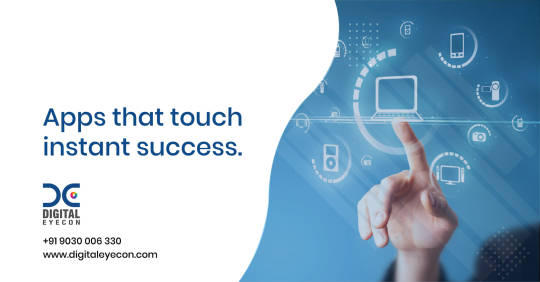
Among the trailblazers in this domain, Digital Eyecon stands as the professional and innovative interactive display software development company providing the best in-class touchscreen display apps.
A touchscreen is an LCD device that can receive input signals when touching graphic buttons on the screen. The feedback system on the screen drives various connected devices according to the pre-programmed program and creates vivid audio and video through the LCD screen. The dynamic touchscreens captivate the audience through animations and targeted content. The interactive content will engage, educate the audience, and help them with the self-serve experience.
Key features of Interactive display apps
Interactivity – These apps facilitate the presentation of information in a captivating and interactive manner.
User-friendly designs – The features are easy to navigate and ensure visitors of all ages can use it effortlessly.
Innovative – These apps are beyond traditional displays, as they use innovative visual techniques offering an immersive experience to the user.
Here are a few points to look for while choosing the best interactive display software development company in India.
Innovative UI designs – User interface design plays a crucial role in touchscreen apps. It ensures an engaging user experience.
Augmented Reality integration – The integration of immersive technologies takes user experience to a new level. Companies with expertise in AR, and VR can create more engaging touchscreen apps that stand out in the market.
Regular support – A reliable interactive display software development company will provide ongoing support and updates, keeping up with advancements in technology and security standards.
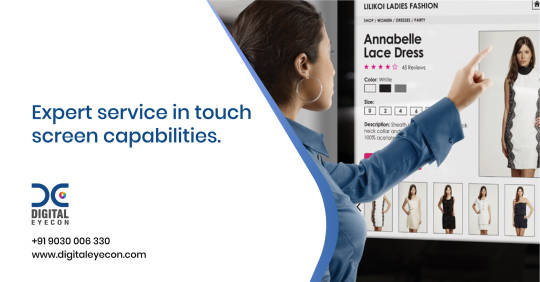
Interactive display apps have become necessary tools in various sectors from education to business. These devices create dynamic and user-friendly interfaces for effective engagement and communication. Digital Eyecon’s team of skilled developers combines technical expertise with a passion for innovation, ensuring the best solutions are in tune with industry trends. Digital Eyecon has left an indelible mark by delivering pioneering touchscreen applications and AR apps tailored for museums and tourist places. The remarkable success of these apps has brought positive feedback, solidifying Digital Eyecon’s position as the best interactive touchscreen display app development company.
As technology continues to evolve, Digital Eyecon brings the best of interactive experiences to diverse businesses and budget needs. With a track record of success, the company is a trusted partner for businesses seeking to elevate their visitor/audience experience through the latest technology. Check for more information at https://digitaleyecon.com/services/interactive-touchscreen-display-app-development-company/
youtube
Interactive touchscreen apps have revolutionized the way businesses engage with their customers. These apps are highly beneficial in creating dynamic experiences and providing a bridge between businesses and their target audience. Interactive touchscreens are all about creating an unforgettable experience that resonates with
the audience. So, choose a company that understands innovation and is committed to delivering the best so your business stands out in the digital landscape.
#interactive touchscreen#app development#web designing company in hyderabad#web designers in hyderabad#digital marketing company in hyderabad#Youtube
2 notes
·
View notes
Text
Future of Design in India

A design course is an educational program that focuses on teaching creative and technical skills necessary for various design disciplines. These courses aim to nurture students' artistic abilities, problem-solving skills, and understanding of aesthetics to prepare them for careers in diverse design fields. Design courses cover a wide range of specialties, including graphic design, fashion design, product design, interior design, industrial design, UX/UI design, and more.
These programs typically incorporate both theoretical and practical learning experiences. Students learn about design principles, colour theory, typography, design software, and tools specific to their chosen field. They engage in hands-on projects, case studies, internships, and workshops to gain real-world exposure and practical skills.
Design courses are structured to develop a strong foundation in creativity, critical thinking, and technical proficiency. They encourage students to explore their creativity, conceptualize ideas, and translate them into tangible designs. Additionally, these courses often emphasize understanding user needs, market trends, and the role of design in addressing societal and industry challenges.
Future of design?
In India, the future of design courses is poised for significant growth and innovation. The design education landscape is evolving to meet the demands of a rapidly transforming economy and future of design in India is growing. Here's some of the best design courses in India:
Industry Alignment: Design courses will become more closely aligned with industry needs. There will be a greater emphasis on practical skills, industry collaborations, and internships to bridge the gap between academic learning and real-world applications.
Technology Integration: India's design courses will embrace technological advancements, integrating them into the curriculum. This includes adopting AI-driven design tools, AR/VR applications, and data-driven design strategies to stay at the forefront of technological innovation.
Diversification of Specializations: As India's economy diversifies, design courses will offer specialized programs catering to emerging sectors like sustainable design, healthcare design, UX/UI for tech products, and service design for evolving industries.
Entrepreneurial Focus: There will be a heightened focus on nurturing entrepreneurship within design courses. Programs will encourage students to develop entrepreneurial skills, fostering a culture of innovation and enabling graduates to start their design ventures.
Global Perspectives: Design courses in India will increasingly incorporate global perspectives, encouraging international collaborations, exchange programs, and exposure to diverse cultural influences. This will prepare students for a globalized design market and foster cross-cultural understanding.
Socially Responsible Design: With an increased awareness of social and environmental issues, design education will emphasize socially responsible design practices. Students will learn to create solutions that address societal challenges, focusing on inclusivity, sustainability, and ethical design.
Government Support and Initiatives: Initiatives by the government and private sector partnerships will further enhance design education in India. Investments in infrastructure, research, and skill development will contribute to the growth and quality of design courses across the country.
A Bachelor of Design (B.Des) offers a diverse range of career opportunities and scopes for graduates in India. Here's a look at the promising design careers of the future:
Graphic Design: B.Des graduates can pursue careers as graphic designers, creating visual concepts using computer software or by hand to communicate ideas that inspire, inform, or captivate consumers.
Fashion Design: With a B.Des in fashion design, graduates can venture into the fashion industry, working as fashion designers, stylists, merchandisers, or textile designers, creating clothing, accessories, or textiles.
Product Design: B.Des graduates can work as product designers, developing innovative and functional products ranging from electronics to household items, focusing on user experience and aesthetics.
UX/UI Design: In the digital realm, B.Des graduates can become UX/UI designers, creating user-centric interfaces and experiences for websites, mobile apps, and software, enhancing user satisfaction and usability.
Interior Design: Graduates specializing in interior design can pursue careers as interior designers, planning and designing spaces that enhance functionality, safety, and aesthetics.
Animation and Multimedia: B.Des graduates can explore careers in animation, multimedia, and visual effects, working in the entertainment industry, advertising, or gaming sectors.
Automobile Design: Aspiring automobile designers can leverage their B.Des degree to enter the automotive industry, contributing to the design and development of vehicles, focusing on aesthetics and functionality.
Entrepreneurship: B.Des graduates often have the option to start their design ventures, launching their brands, studios, or design consultancy firms catering to various design needs in the market.
The scope for B.Des graduates in India is diverse and expanding. B.Des admissions 2024 are increasing and design course admissions will only be going up in the near future. With creativity, technical skills, and a strong understanding of design principles, graduates can contribute to various industries and sectors. Additionally, the growing emphasis on design thinking and user-centric approaches across industries further amplifies the demand for skilled design professionals.
Shoolini University stands out as the top-tier destination for aspiring UI/UX Designers. Ranked No.1 private university in India by THE World University Rankings 2023, the Yogananda School of AI, Computers, and Data Science at Shoolini offers two specialized courses for UI/UX enthusiasts: BTech CSE UI/UX and BCA UI/UX.
The advantages of pursuing a UI/UX course at Shoolini University are abundant. Here are some highlights:
- Esteemed faculty from renowned institutions like Berkeley, UPenn, Columbia University, Stanford, Oxford, IISc, and IITs.
- Valuable industry collaborations with AWS, IBM, Google Digital Academy, and Bosch offering certifications to students.
- A patent filing encouragement policy, 'One Student One Patent', fostering innovation.
- Extensive international collaborations with 250 universities for student and faculty exchange programs.
- 'Mission 130' dedicated to achieving 100% placements for Engineering students and 30% in top-tier firms.
- Strong recruitment ties with leading companies like Ericsson, HCL, Trident, Citrix, Genpact, Cognizant, and IBM.
- QS I-Gauge 'Diamond Rating' for academic excellence.
- Industry-recognized certifications and robust associations with IBM, Microsoft, and AWS Academy.
- Hands-on learning opportunities with mentors on real-life projects within small teams.
- Access to Siqandar, a top-notch AI interview prep coach, for interview preparation. In conclusion, for those aspiring to excel in the UI/UX design domain, Shoolini University emerges as the premier choice in India. Here at the school of design, your aspirations to embark on a UI/UX design career find a nurturing platform. If technology inspires you, problem-solving thrills you, and crafting exceptional digital experiences is your passion, Shoolini University offers the perfect launchpad of B.Des. degree program. Dedication, continuous learning, and a sprinkle of creativity pave the way to crafting products that captivate users—a fulfilling journey in the realm of UI/UX design awaits! Happy designing!
2 notes
·
View notes
Text
Integration of AI and Blockchain: All You Need to Know
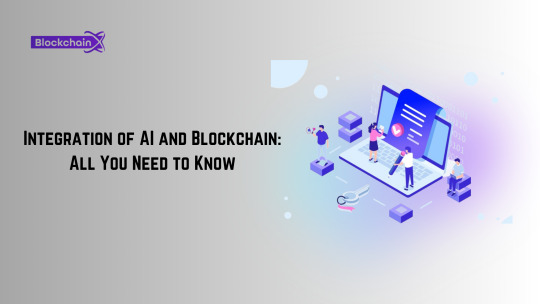
The convergence of AI and the metaverse
Interestingly, this convergence has its roots in the same hardware that powers it. GPUs, known for rendering rich virtual spaces, are the same workhorses that train AI models. Their parallel computing capabilities not only make them invaluable in AI development, but also in bringing the complex environments of the Metaverse to life. This synergy is evident in the rising value of GPU manufacturers like Nvidia, highlighting the intertwined growth of artificial intelligence and virtual reality technologies.
Looking ahead to 2024, the convergence of AI and the metaverse is shaping up to be a fundamental advance in our technological journey. We are about to witness how AI transforms the act of creation within the metaverse. This year, we predict that AI will evolve beyond its current capabilities, allowing creators to create expansive virtual worlds simply through the power of description. The metaverse will no longer require complex skills in 3D modeling and animation; instead, it will respond to the creative impulses of Human thought, which AI brings to life.
The trust architecture of tomorrow
The year 2023 was a crucible for blockchain, with the industry going through legal challenges and corporate upheavals. These tests, reminiscent of the growing pains of any technological breakthrough, heralded the maturation of blockchain. Amid this legal maelstrom, the essence of blockchain – the digitization of asset ownership – remained resolute and unscathed, continuing its march towards the technological revolution.
We envision blockchain merging into the fabric of the Internet, similar to the invisible but vital protocols that power our emails and instant messages. This convergence will make blockchain assets become a native dialect of the digital realm, essential and, most importantly, invisible to the user. Interacting with blockchain will be as simple as sending an email, with its hidden complexities and omnipresent efficiency and security. In this future, blockchain development services is not just a technology; it is a silent orchestrator of digital trust and ownership.
Synergies between virtual reality and the metaverse
In 2023, virtual reality (VR) has risen to become the next frontier in human-computer interaction, providing unprecedented bandwidth for digital communication and embodying the essence of presence. This leap forward has been driven by advances from major hardware manufacturers, with the launch of Meta Quest 3 and the long-awaited VR headsets from Apple and Nintendo. Every step in this area is not just about technological progress; It is about redefining our own perception and interaction with digital spheres.
Looking ahead to 2024, we are on the brink of a watershed moment in the spatial computing industry. The potential use case of experiencing events like the NBA Finals from the best seats in the stadium, all from the comfort of home, is set to capture the imagination of the masses. This experience, bridging the physical and digital worlds, will likely be a catalyst for widespread adoption among the early majority. The road ahead for virtual reality is long and full of potential, but the convergence of technologies such as artificial intelligence, blockchain and advanced hardware is setting the stage for a seismic shift.
The cultural and economic impact
In the narrative of our digital evolution, Generation Z emerges as the vanguard of a new cultural epoch. Born in a world where virtuality is as real as the air they breathe, these digital natives are the first to fully immerse themselves in the fruits of technological convergence. His initial, playful and experimental forays into the creation of memes and digital artifacts are nothing more than the prologue to a deeper and more significant change. With AI-powered tools and the metaverse at your fingertips, they don't just use technology; They are reshaping it, subjecting the digital universe to their imagination and whims.
We see these young minds not only embrace but master the art of creation within these new realms. They are the pioneers of a world where user-generated content is not just a hobby but a new economic frontier. In their hands, creativity and innovation become more than expression; They are the keys to unlocking new forms of value and influence. The power once held by a select few over coding and legal complexities is now democratized in the hands of these young creators, heralding a future where the digital realm is limited only by the imagination.
In 2024
As the year 2024 progresses, we find ourselves on the cusp of a transformative era in technology. The integration of AI, blockchain and virtual reality is creating a new digital landscape. This convergence is more than a mere fusion of technologies; It is a revolution in the way we interact with the digital realm. The advancement of AI is redefining creative possibilities in the metaverse, allowing environments to be shaped solely by thought. Blockchain evolves into a fundamental layer of digital trust, making asset ownership part of the fabric of the Internet. Virtual reality, on the brink of a breakthrough, will radically change our sensory experiences in digital spaces.
Fundamentally, this technological synergy is the playing field of Generation Z, who are not only users but active creators and modelers of these areas. Their commitment to these technologies is not just about leisure; It is the forging of a new economic and cultural landscape where imagination is the main currency.
#blockchain#blockchain development#blockchain development company#blockchain development service#blockchain technology
3 notes
·
View notes